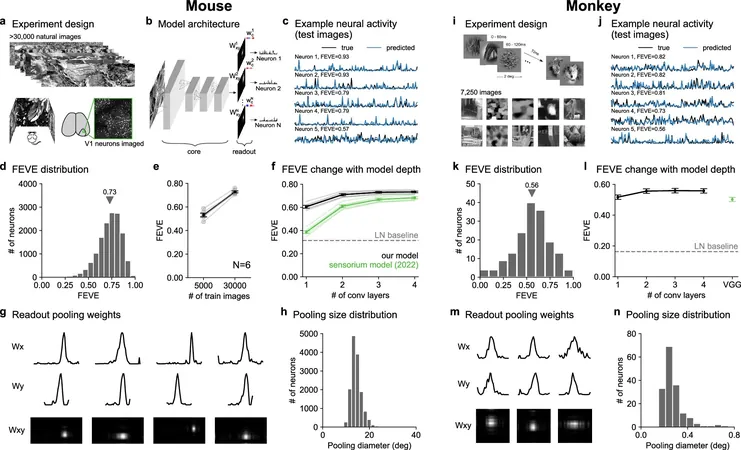
Revolutionary Breakthrough: Scientists Use Base Editors to Combat Huntington's and Ataxia Disorders!
2025-05-28
Author: Rajesh
Breaking New Ground in Genetic Editing
In an exciting new study, researchers led by David Liu, PhD, from the Broad Institute, have leveraged cutting-edge base editing technology to make significant headway against two debilitating genetic disorders: Huntington's disease and Friedreich's ataxia. Published in a recent edition of Nature Genetics, this groundbreaking work details how these scientists corrected the faulty genes responsible for these devastating conditions.
The Tragedy of Trinucleotide Repeat Disorders
Huntington's and Friedreich's ataxia are classified as trinucleotide repeat disorders, caused by troublesome repeating sequences of DNA that, when they exceed a certain threshold, lead to catastrophic consequences such as brain cell death and the degeneration of vital nerve fibers. The team incorporated single base changes within these repeating sequences, and the results were promising: both patient-derived cells and mouse models exhibited stabilized or shortened repeat lengths over time.
A Milestone Towards Effective Treatments
Though further research is essential to explore potential side effects, Liu expressed optimism about the implications of their findings. 'While much more work is necessary to determine whether editing these repeats can form the basis of a viable treatment, we've reached a significant milestone in understanding the biological impacts of these interruptions,' he explained.
Insight into Genetic Variation and Symptoms
Strikingly, about one in 3,000 people is affected by these repeat-related disorders. Individuals with identical diagnoses often possess different lengths of repeats. Those burdened with longer repeats typically experience earlier onset and accelerated progression. Interestingly, some patients naturally harbor interruptions within their repeats, which seem to confer milder symptoms and lower chances of passing the condition to the next generation.
Mimicking Nature's Interruptions
Inspired by these observations, the researchers aimed to mimic these natural interruptions using their base editing technology. They engineered a system using cytosine and adenine editors to substitute certain pairs within the troublesome DNA sequences. To deliver this precise editing tool, they cleverly packaged it within dual AAV9 vectors.
Hope for Multiple Genetic Disorders
This pioneering study not only demonstrates that inducing interruptions can stabilize these troublesome repeats but also proves that this base editing technique could potentially be adapted to tackle a myriad of repeat disorders. 'This paves the way to accelerate therapeutic development for many related diseases,' emphasized Mandana Arbab, PhD, a key contributor to the research.
Addressing Off-Target Effects
One challenge remains: since these repeat sequences may also appear in other genomic areas, there's a risk of unintentional edits that could lead to adverse effects. Liu's team has noted that most unintended edits occur between genes or in non-coding regions, reducing potential harm. They are committed to further assessing these impacts in more sophisticated models that closely resemble human diseases. Separately, they are exploring prime editing techniques to replace disease-causing repeats with shorter, stable alternatives.
A Bright Future Awaits
As researchers continue to unlock the mysteries of these genetic disorders, the hope is that innovative solutions like base editing will pave the way for groundbreaking new therapies that could transform lives for those affected by Huntington's disease, Friedreich's ataxia, and beyond!




 Brasil (PT)
Brasil (PT)
 Canada (EN)
Canada (EN)
 Chile (ES)
Chile (ES)
 Česko (CS)
Česko (CS)
 대한민국 (KO)
대한민국 (KO)
 España (ES)
España (ES)
 France (FR)
France (FR)
 Hong Kong (EN)
Hong Kong (EN)
 Italia (IT)
Italia (IT)
 日本 (JA)
日本 (JA)
 Magyarország (HU)
Magyarország (HU)
 Norge (NO)
Norge (NO)
 Polska (PL)
Polska (PL)
 Schweiz (DE)
Schweiz (DE)
 Singapore (EN)
Singapore (EN)
 Sverige (SV)
Sverige (SV)
 Suomi (FI)
Suomi (FI)
 Türkiye (TR)
Türkiye (TR)
 الإمارات العربية المتحدة (AR)
الإمارات العربية المتحدة (AR)